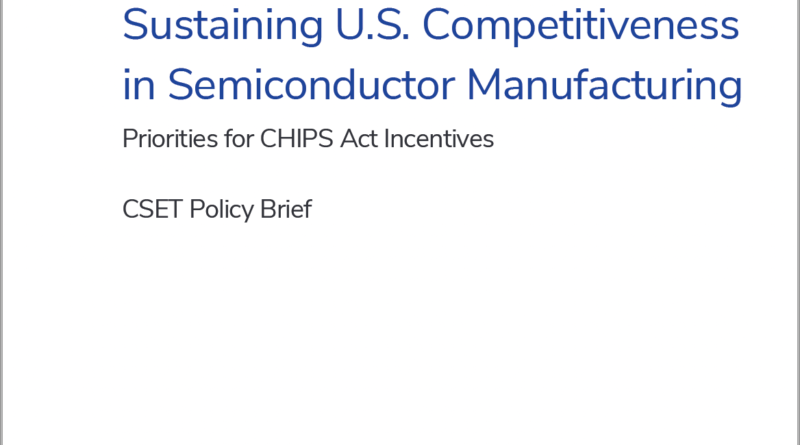Sustaining U.S. Competitiveness in Semiconductor Manufacturing – Center for Security and Emerging Technology
Will Hunt
Since 1990, the U.S. share of global semiconductor manufacturing capacity has declined while the shares of China, South Korea, and Taiwan have increased. If carefully targeted, CHIPS for America Act incentives could reverse this trend for the types of chips that matter most to U.S. national security. In this policy brief, the author assesses how CHIPS Act incentives should be distributed across different types of chips.
The American semiconductor manufacturing industry needs a course correction. The ongoing global chip shortage has shown that U.S. economic and national security depend on secure access to computer chips. But since 1990, the U.S. share of global semiconductor manufacturing capacity has declined while the shares of South Korea, Taiwan, and China have increased. To reverse this trend, Congress passed the CHIPS for America Act, which became law at the start of 2021, authorizing the Department of Commerce to administer tens of billions of dollars in federal grants with the aim of incentivizing chipmakers to increase their manufacturing capacity in the United States
CHIPS Act incentives will help sustain the United States’ advantages as a leader in semiconductor manufacturing. The United States has many features that are appealing to chipmakers, including top talent; the world’s best chip design firms; excellent intellectual property protection; and ample land for developing semiconductor fabrication facilities, known as fabs. U.S. and foreign chipmakers alike have expressed interest in establishing leading-edge chipmaking capacity in the United States with the help of federal incentives. And because of the high economies of scale involved in advanced chipmaking, these initial investments could translate into long-term commitments, helping keep the United States at the leading edge of semiconductor manufacturing for the foreseeable future.
But to be effective, CHIPS Act incentives must be carefully targeted toward specific types of semiconductor capacity. This report therefore assesses (1) the types of chip capacity that are in most urgent need of reshoring from a national security perspective; (2) how much capacity can and should be built for these types of chips with available incentives; and (3) how incentives should be distributed across different types of chips. Note that it is beyond the scope of this report to assess priorities for the $2 billion set aside for mature technology nodes in the U.S. Innovation and Competition Act. This funding should likely go toward the most sensitive needs of the U.S. government, such as specialized analog chips used in military technologies. This report focuses instead on how to spend the remaining $37 billion in manufacturing incentives.
Findings:
Recommendations:
Alongside funding, Congress should ensure that U.S. chipmakers have access to ample manufacturing talent and onshore advanced packaging capabilities. Congress should also streamline regulatory processes for building new fabs. These aspects are discussed in forthcoming and previous CSET research.
January 2022
Supply Chains
The Center for Security and Emerging Technology within Georgetown University’s Walsh School of Foreign Service provides decision-makers with data-driven analysis on the security implications of emerging technologies.
[email protected]
[email protected]
